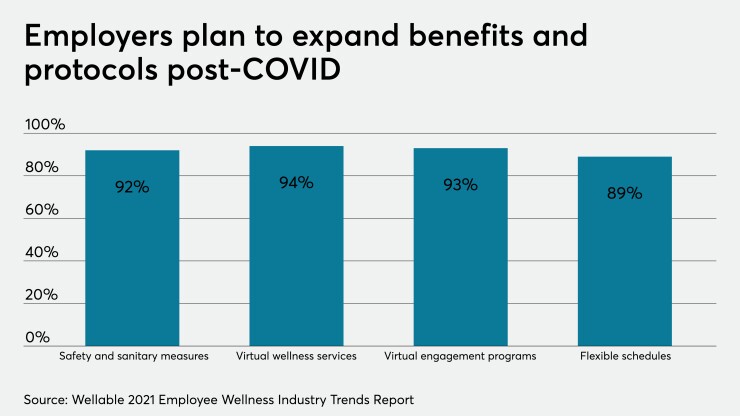Many employers are in the process of deciding what reopening offices will look like, now that we are closer to general
Employees have been sharing their different comfort levels about returning to the office and most employers are favoring a hybrid approach in which employees can choose to either work from home, or come into the office. Twitter made headlines early on in the pandemic with the announcement that employees can choose to
Choice will define the future of the workplace, informing not only where and when but how we work for years to come. This is the new normal: the self-serve workplace.
Read more:
Working with employers from around the world, I often hear how the pandemic has changed the way people work and notably, the dynamic between organizations and their people. Pre-pandemic, employees would assess whether a company’s established mission and values aligned with their own. Now, it’s on the employer to bend to meet the values (and more importantly, the needs) of its people. Seventy six percent of global employees want to continue working from home a few days a week. As such, companies need to reconsider their one-size-fits-all approach that has been the status quo for decades.
Here is some advice to help employers prepare for the self-serve workplace:
Treat each employee like a complicated coffee order
We are all living under unique circumstances with vastly different sets of challenges and constraints that inform the choices we make about work. While catering to the majority is certainly easier, employers should treat each employee as a unique individual and align offerings accordingly. It’s important to offer a
Be transparent about options
It’s not enough just to offer more options, you must go the extra mile to communicate what those options are, otherwise your people are unlikely to take advantage of them. Most folks, even those who’ve been at the same workplace for years
Don’t try to replicate the playbook
The biggest mistake employers can make in this new self-serve workplace is to prescribe the same playbook to every unique situation — this is especially true for at-home versus in-office workers. For example, it can be tempting for employers to try to replicate office culture for the large swath of at-home workers, but this approach does more to alienate than to foster true connection. Instead of sending out a Zoom link for your office party, try asking your remote workers what they need to feel included. Or perhaps ship your culture home with a box of snacks or a bottle of wine. Employers must craft distinct strategies for every working scenario. Office culture and company culture are no longer the same thing.
Check in from the top
Everyone likes to feel seen and heard by the decision makers and leaders in their company — and this is especially true for employees who have decided to work from home and may be facing
Prioritize a new set of skills in hiring
We need to trust employees to make the right decisions and be vocal about their needs. When hiring, think about the skills that define that kind of employee. Seek out entrepreneurial self starters who don’t need a lot of hand-holding, and have the ability to self-regulate and self-manage. These are the skills that will enable successful, thriving careers in this new world of work.
Transitioning to the new normal is an opportunity for companies to build a workplace that actually works for its people. Ten years from now, we’ll look back and see this moment as a pivotal turning point for the workplace — a point at which all of us were called upon to demonstrate more empathy for one another. It’s on us as business leaders to ensure we’re heeding that call and setting the right tone for years to come — so don’t miss the chance to show up for your people.






